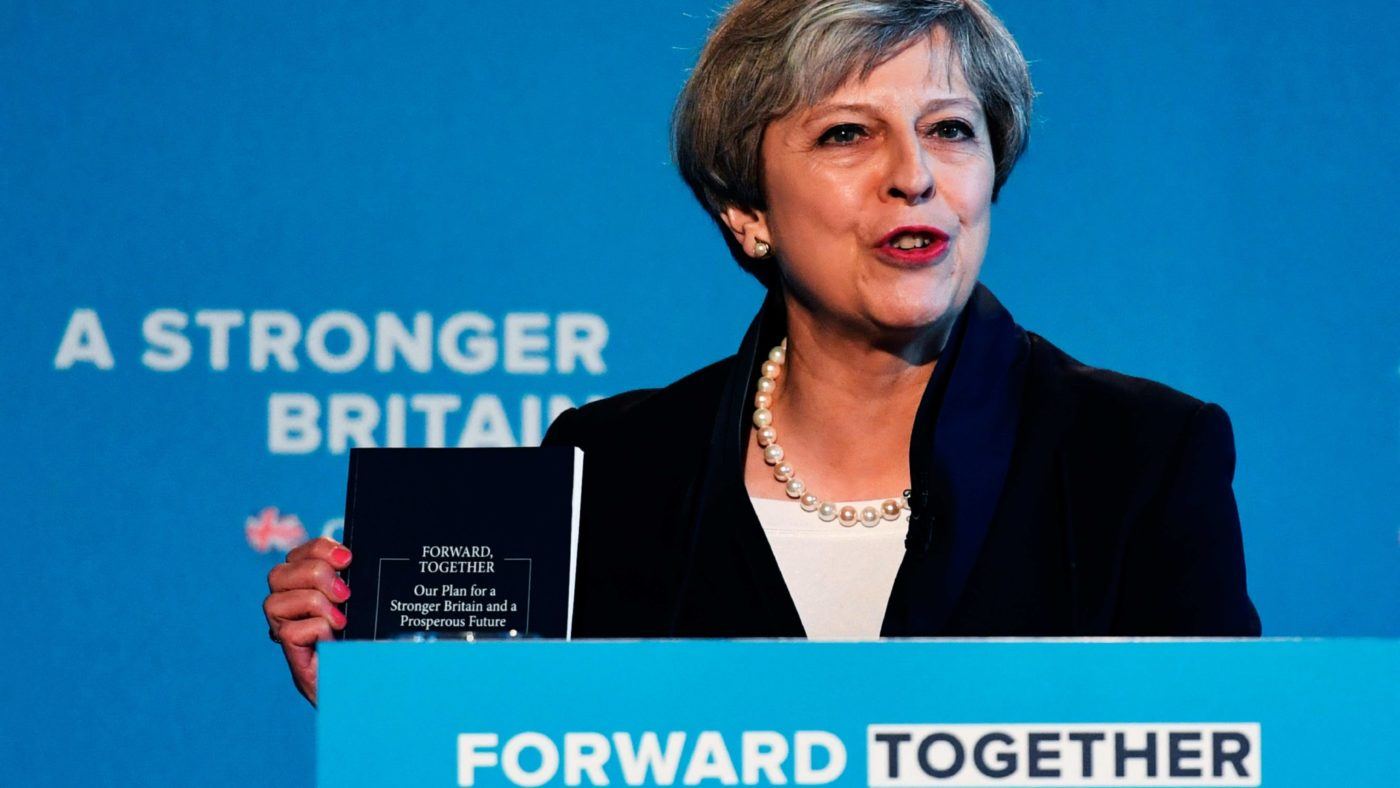The Conservative manifesto is out today. It’s largely a, well, conservative affair. Nothing terribly radical or new, somewhat to the disappointment of those hoping for a carpe diem manifesto of transformative economic and social change.
At least, I say it’s the “Conservative” manifesto. Some people aren’t clear whether the Conservatives are actually running this time. By contrast the “Theresa May’s Team” party (sometimes known by its other name: the “Strong and Stable Government” party) is definitely standing.
This is not an entirely frivolous point. Remember that Theresa May was the originator of the notion that the Conservative brand was now so toxic that we were the “nasty party”. Maybe she still believes that?
Or maybe – perhaps more generously to her – she believes that in many of the parts of the North and Scotland where for decades it was inconceivable that someone would vote “Tory”, they would find it much more plausible to vote “Theresa”? She may well be right, especially to the extent she can make it a choice between “Theresa” and “Jeremy”.
As expected, various promises from the 2015 manifesto have gone or been diluted. The ring-fence on pensioner benefits is removed. The “triple lock” on pensions is replaced by a double lock. There will be extra scope to vary taxes (including raising them if necessary). The budget won’t be in balance before 2025. There’ll be a bit more money for the NHS and schools. Social care will not be fully nationalised. Instead, we’ll just raise the assets threshold from £23,000 to £100,000, meaning most pensioners with a house who need social care will still have it sold off after they die to pay for that.
Perhaps the most controversial measure will be the retention of the target of getting migration down to the tens of thousands, reinforced with a large rise in the “immigration skills charge” (only introduced in April 2017, anyway) – meaning businesses must pay a large annual fee for any foreign workers they bring in.
Leaks suggest that everyone in the Cabinet but Mrs May was expecting the tens of thousands target to go. No one believes it will be met, or that if it were met during the next Parliament that would be anything other than a bad idea.
The lack of ambition in the manifesto, combined with measures such as an energy price rise cap, have led some to claim that Mrs May is allowing social democrat concepts to win the day even as the Labour Party is destroyed. “What’s the point of a huge Conservative majority,” they ask, “if we’re just going to act like post-Brexit Blairites anyway?”
This all seems well wide of the mark to me. What Conservative Party leader who had any chance of winning a general election ever ran on a radical manifesto at their first election? Not Heath (it was two elections before he got radical). Not Thatcher. Not Churchill. Not Baldwin. Every Conservative leader wants to get bedded in with a bit of political security and confident mastery of the system before trying radical stuff.
Why expect May to be any different? If she’s still around in 2022 and 2026, those’ll be when the radical stuff happens. Even if she does get a bit more radical later, the political reality is that Theresa May will be remembered as the Brexit Prime Minister. That is the only issue that matters for now, and is probably the issue that will dominate her entire premiership. And on that question she’s almost exactly where the British public wants her to be.
She doesn’t need to promise anything clever or radical, or take any gambles at all. As things stand, voters face a choice between the Theresa May’s Team Party, the Mass-nationalisation pro-terrorists Party, the Let’s have a 2nd referendum Party (that’s the Lib Dems, by the way – yes, they are still going; they haven’t formally folded yet) and the Let’s break up the UK even though we lost the indyref Party.
I have no idea when there was last an electoral choice so simple. And there’s no tension. Everyone knows the Conservative majority will be in the three figures. The only real question is whether it will start with a “1”.
Labour’s opinion poll rating has, much to almost everyone’s surprise (indeed, to the astonishment of Labour canvassers) risen in recent weeks, now frequently sitting in the implausible 30s. Analysis by YouGov suggests that up to a third of that is new voters attracted to Corbyn from the ranks of students and other demographics who rarely turn up on the day. My money’s still on below 25 per cent, and it could be closer to 20 per cent on the day.
That’s going to give Theresa May and her Strong and Stable Team utterly legislative dominance to do whatever they fancy for the foreseeable future. Don’t think too hard about the manifesto or buy into any of the “Red Theresa” stuff. They’ll get around to being radical all in their own good time.


